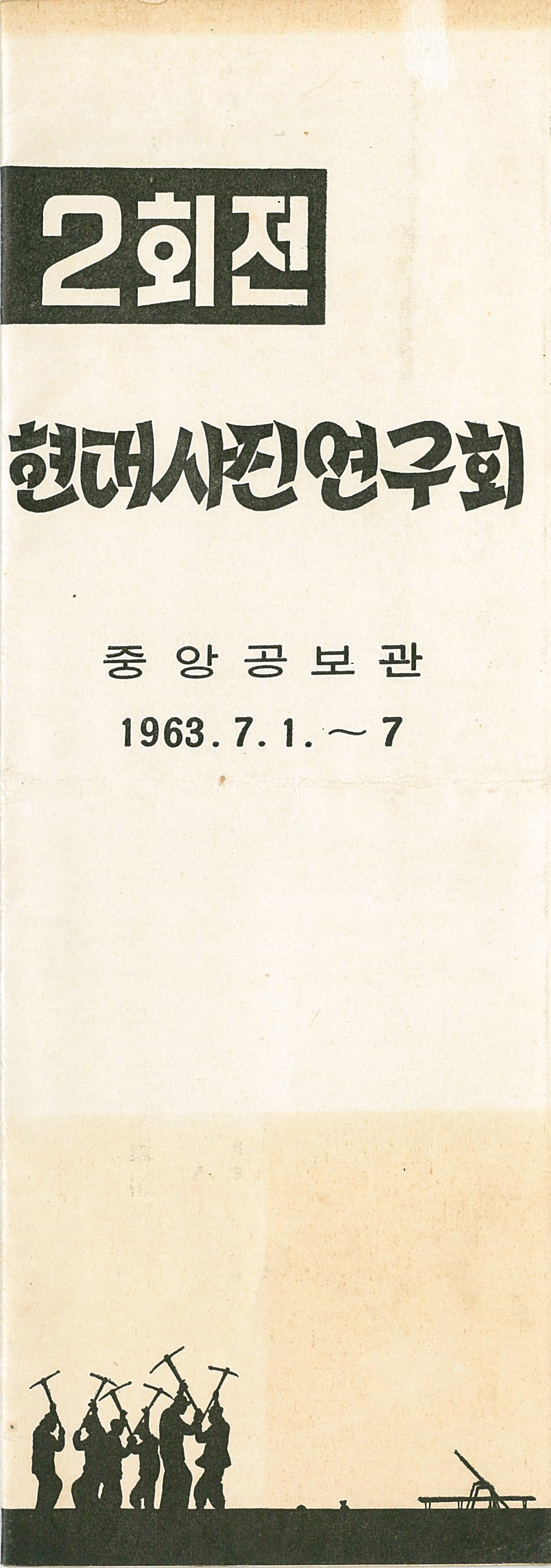
The First Salon Ars Photo Exhibition, Leaflet, 1961. MMCA Art Research Center Collection
Salon Ars
* Source: Multilingual Glossary of Korean Art. Korea Arts Management Service
Related
-

Sinseonhoe
A photography club formed in April 1956, by young photographers in their 20s and 30s, such as Lee Hyungrok, Lee Ansun, Jo Gyu, Son Gyumun, Lee Haemun, Chung Bumtai, Jo Yonghun, Han Youngsoo, An Jongcheol, and Kim Beomsam. The group adopted an attitude that diverged in technique and content from Salon photography, which centered on realist photography. In doing so, the group established a new trend in Korean photography. The group was not a social club, but rather a pure research association that elevated the dominant methodologies of Korean photography to a new level. In 1960, internal disputes within the Shinseonhoe led key members including Lee Hyungrok to resign and form Salon Ars.
-

Lee Hyungrok
Lee Hyungrok(1917-2011) is a renowned artist in the history of modern and contemporary Korean photography. Born in Gangneung, Gangwon-do Province, Lee graduated from Gangneung Agricultural High School. After graduation, he learned photography at a photo studio (which also served as a shop selling hardware related to photography) in Gangneung run by his eldest brother Lee Sangrok. In the mid-1930s, he joined the Gangneung Sauhoe, a photography club, and began to fully engage in photography. The Gangneung Sauhoe is an amateur photographer group organized by Limb Eungsik, a photographer who moved from Busan to Gangneung at the time. In 1937, Lee along with Lim and ten other members of the Gangneung Sauhoe prepared about fifty photographs and held the inaugural exhibition of the Gangneung Sauhoe. From 1937 onward, he repeatedly won honorable mentions at the Joseon Photography Exhibition [Joseon sajin jeollamhoe], a contest hosted by the Joseon Federation of Photography [Jeon joseon sajin yeonmaeng], establishing himself as an amateur photographer. After Korea’s liberation from Japan and the Korean War, he departed from the trend of salon or painterly photography and advocated for realistic photography that highlighted snapshots, recordability, and a documentary approach. Particularly in the 1950s and 1960s, Lee captured fatigued lives of ordinary people in the city and its outskirts in warm black-and-white language by photographing shoemakers, fishermen, street vendors, and children on the streets. He contributed to the development of Korean photography culture by advancing realist photography and exploring new modes of expression for modern photography, while forming photography groups and training the younger generation after Korea’s liberation. In particular, he played a leading role in the founding and activities of photography organizations in the 1950s and 1960s, including Sinseonhoe (established in 1956), Salon Ars (established in 1959), and the Modern Photography Society [Hyeondae sajin yeonguhoe] (established in 1960).
Find More
-

Modern Photography Society
The Modern Photography Society was formed by young photographers in their 20s and 30s in 1960. Its establishment was led by Lee Hyungrok of Salon Ars. The group was formed to produce photographers and provide a foundation for the membership of Salon Ars. Its instructors included Lee Hyungrok, Chung Bumtai, Kim Haeng-o, and Lee Sanggyu. The members were active in the field for a set period, and if their work was recognized, they became eligible to join Salon Ars. This method had significant implications in that it helped to produce professional photographers in an era that lacked a relevant public education system. In August 1964, the group first published the periodical Saan, which shared the current activities of its membership. The membership also published individual research on photography, sharing information on the discipline. The periodical was discontinued following its 10th issue in 1966.
-

Korean Information Service Gallery
A gallery established in 1957 in Sogong-dong, Seoul. The parent organization of the gallery was the Office of Public Information. The gallery moved to a temporary building in the Northeast section of Deokusung in 1968. The Korean Information Service Gallery was originally a facility where a diverse range of exhibitions including art, crafts, and photography could be held for free, but changes in the Korean Information Service’s policy led the building to be used only for the promotion of government policies starting in April 1972. When the National Museum of Modern Art, Korea (now MMCA) moved to Deosukung Palace in 1973, this branch of the National Museum assumed the role of the Korean Information Service Gallery.






